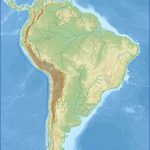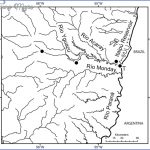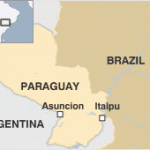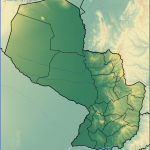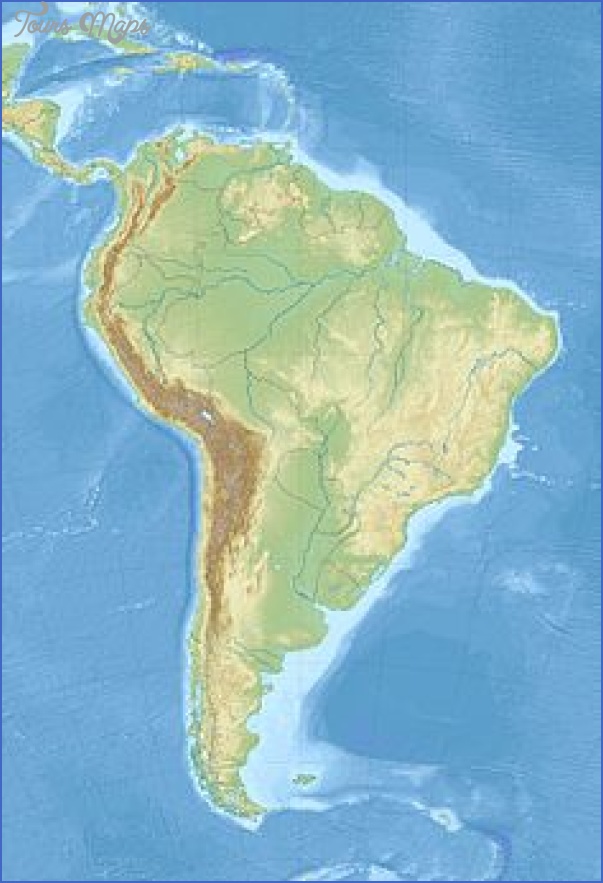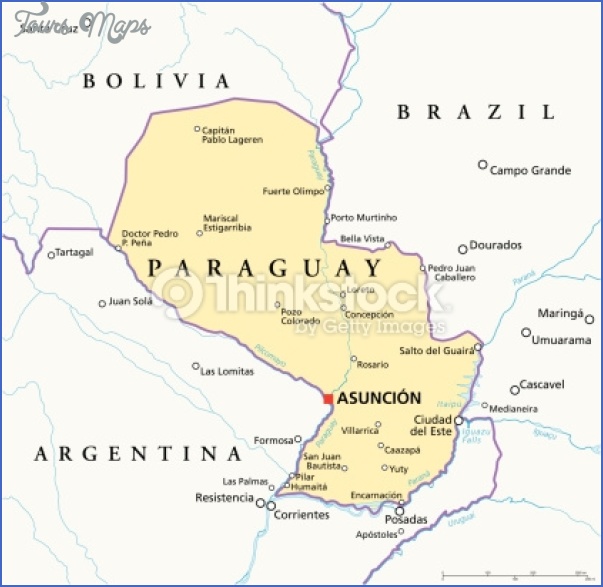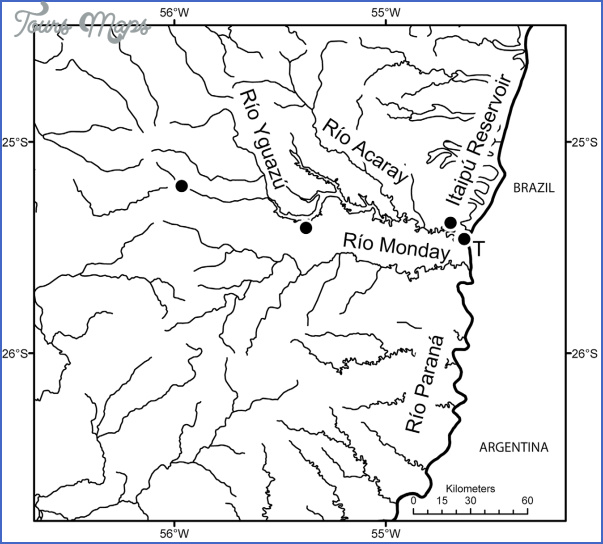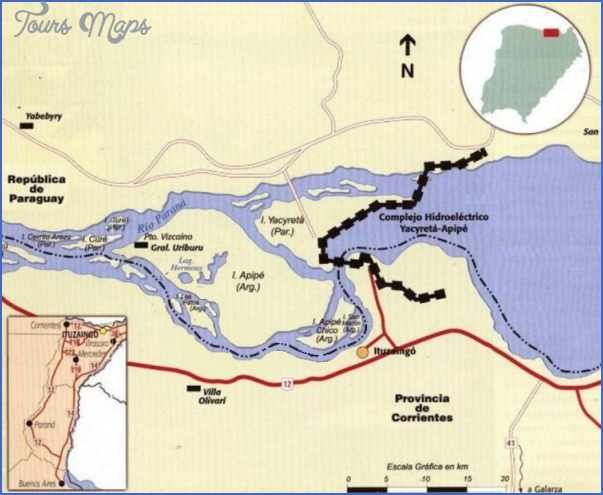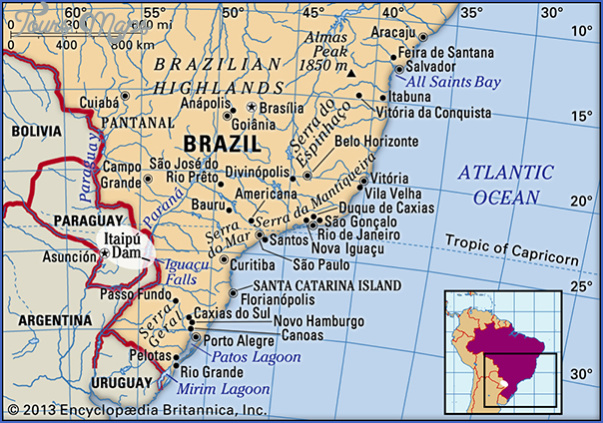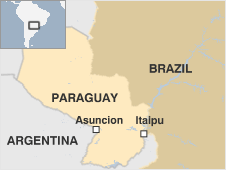The dam is located fourteen kilometers North of Ciudad del Este in the city of Hernandarias along the side of the supercarretera. Entrance to the Centro de Recepcion de Visitas (Visitors Center) is on the right-hand side of the road (if coming from Ciudad del Este) and hard to miss. The entrance to the Museum and Zoo is located just before the CRV on the left-hand side of the road.
Taxi ride is about Gs.50,000 from Ciudad del Este’s bus terminal – coordinate with the driver for a rate if you want him to wait for you to finish the tour of the dam Buses marked Hernandarias will go past the entrance to the dam In Ciudad del Este these head north down Avenida Pioneros del Este, turn west (left) on the Ruta Internacional, and then North (right) at km 4. Specify you want to get off at Itaipu or at the Centro de Recepcion de Visitas. This bus can take a while so your other option is to take any bus going from the commercial area along Avenida Pioneros del Este or the Ruta Internacional to km 4 and then take any bus heading north towards Hernandarias. However you should confirm with the driver that the bus will pass Itaipu/Centro de Recepcion de Visitas as some of the buses heading North only go as far as the
Parana Country Club (and many buses are poorly signed). Bus fare is approximately Gs. 2,700.
The Divisive Dam
From its inception Itaipu has been a lightning rod for conflict. Environmentalists protested the negative impact of the flooding while those opposed to the Stroessner dictatorship wondered about illicit deals between the Paraguayan and Brazilian government (at the time both countries were governed by military dictatorships). Today Itaipu is often the subject of controversy. Politically appointed Itaipu directors are constantly being switched out like a game of musical chairs. Hydroelectric energy payments (known as royalties) represent one of Paraguay’s main sources of income – as a result Itaipu officials are constantly being accused of misappropriating funds for everything from personal profit to covering political campaign costs. Aiding to the corruption, there is no mechanism set up for internal audits. Jobs at Itaipu are among the highest paying employment opportunities in the country with salaries that are orders of magnitude higher than those available in the public or private sector. As such accusations of nepotism are common.
One of the most controversial aspects of the dam’s operation is the sale of excess energy to Brazil. The fixed price for this energy stipulated in the original 1973 Itaipu treaty is only a fraction of the current market value for electricity. Thus Paraguay looses a significant amount of money in the transaction while Brazil, which resells the energy internally at market rates, makes a tidy profit. The terms for resale of energy to Brazil are decried by the majority of Paraguayans as unfair and are a constant sticking point in bilateral relations. In 2009 President Lugo managed what was then considered to be a major political accomplishment – an early renegotiation of the Itaipu treaty scheduled to expire in 2023. At the end of a lengthy negotiation process Brazil agreed to increase the price paid for Paraguay’s excess electricity (more than tripling the income generated) and to allow Paraguay to sell energy directly to the Brazilian market in the future and to other markets starting in 2023. Brazil has also agreed to fully finance the construction of a 500 KV electricity substation running from Itaipu to Villa Hayes, the cost of which represents about a fifth of Paraguay’s outstanding debt for the construction of Itaipu. This substation is badly needed to bolster the country’s overloaded electrical grid and is an essential part of the infrastructure needed to sell energy to neighboring Argentina in the future.
Saltos de Guaira: The Waterfalls that made Itaipu Possible
From an environmental conservation perspective one of the most lamentable collateral damages of the construction of Itaipu was the flooding of Paraguay’s largest waterfalls known as Saltos del Guaira or Salto Grande de las Siete Caidas. It is hard to imagine, but Iguazu Falls paled in comparison to this series of enormous waterfalls which were described by Captain Azara in 1788 as follows:
“Above the falls the Parana is 4,600 yards wide, when suddenly it becomes contracted to a narrow channel of 60 yards, containing almost as much water as all the rivers of Eurpoe collectively, and rushing downward with indescribable fury. The fall is not vertical, but a plane with an incline of 50 degrees, equal to a perpendicular fall of 56 feet. The noise is heard 20 miles off, and the spray rises in columns visible several miles away. The very earth seems to vibrate at the shock.”
These massive waterfalls played an important role in Paraguay’s early history. In the 1630’s the Jesuit missions of the department of Guayra upriver from the falls were constantly falling prey to slave traders from Sao Paolo, Brazil. In an attempt to save the remains of the missions Father Antonio Ruiz Montoya decided to relocate all remaining members of the
Guayra missions (approximately 12,000 indigenous) to the south of the falls, effectively using the Saltos de Guaira as a shield from further attacks. Movie buffs will recognize this event from the Oscar award winning film The Mission, which was filmed mostly in Colombia, rather than Paraguay.
Curious to see what the Saltos de Guaira looked like? Until the creation of the Itaipu Reservoir (also known as Lago Itaipu) visitors were able to admire the magnificent falls from from a series of rope bridges. As the demise of Saltos del Guaira became imminent more and more tourists flocked to visit the falls. There are several online forums with photos of the falls as well as videos on Youtube.
Dam Map Paraguay Photo Gallery
Maybe You Like Them Too
- The Best Cities To Visit in The World
- World’s 10 Best Places To Visit
- Coolest Countries in the World to Visit
- Travel to Santorini, Greece
- Map of Barbados – Holiday in Barbados

